Animal liver has always been a frequent visitor to the Chinese dining table. However, many people also have objections to eating animal liver. Backstage in Clove Mother, they often see such messages:


Some doctors even think that it is neither necessary nor safe to give children animal liver only from the perspective of nutrition.]
Is there any poison in the animal liver? Can pregnant women eat? Is it certain that anemia will occur if you don’t eat it?
The article is a bit long. If you are anxious to read the conclusion, you can be told first:
Pork liver from regular sources can be eaten. Appropriate intake of animal liver can provide rich nutrients such as heme iron, vitamin A, folic acid, etc. without poisoning.
Pig liver is really not necessary to eat, but if you don’t eat it, you need to pay more attention to the supplement of some nutrients, especially pregnant women, lactating mothers and infants.
Popular science nutrition knowledge needs to be based on evidence and combined with national conditions.
Pig liver has what poison, can it be eaten?
It’s edible.
At present, the so-called “pig liver is poisonous” is a rumor in the community. It is believed that pig liver is a detoxification organ, which is poisonous and cannot be eaten.
But in fact, there is no scientific evidence for these. Animal liver is an organ for detoxification, which does not mean that eating it will lead to poisoning.
A healthy liver will metabolize toxins out of the body, but compared with other organs, it is true that there will be more heavy metals and drug residues.
However, as long as we buy qualified pork liver that has passed quarantine, we should fully wash and soak it before eating. In addition, the amount of pork liver we eat is actually very limited (and we don’t let everyone eat it every day or every meal), so we really don’t need to worry too much.
So you can eat it, and there is no need to eat it every day.
Is the risk of eating pork liver what?
Excessive vitamin A.
Animal livers, including pig livers, have very high vitamin A content.
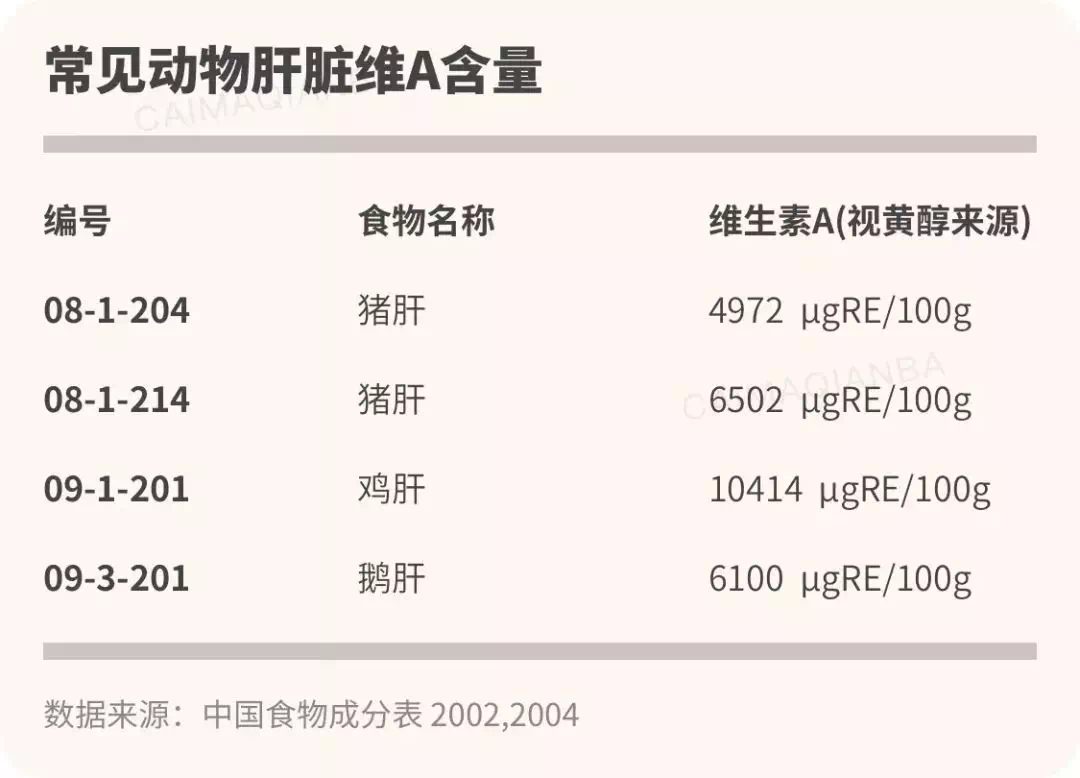
Excessive intake of vitamin A as a fat-soluble vitamin is indeed harmful to human body.
Including acute and chronic vitamin A overdose poisoning, such as nausea, headache, vomiting and elevated brain pressure; Central nervous system disorders, skin injuries, etc.
For pregnant women, excessive vitamin A intake may also cause birth defects (not only vitamin A, any nutrient excess is toxic and side effects).
Therefore, all countries will set UL (Tolerable Maximum Intake) for nutrients on the premise of sufficient evidence-based medical evidence, which means that you should not exceed. Below UL level, it will not produce harmful results for almost all individuals, but it does not mean that it is beneficial to health.
For most nutrients, we should still use RNI (Recommended Intake) or AI (Appropriate Intake) as indicators to evaluate nutrient intake targets.
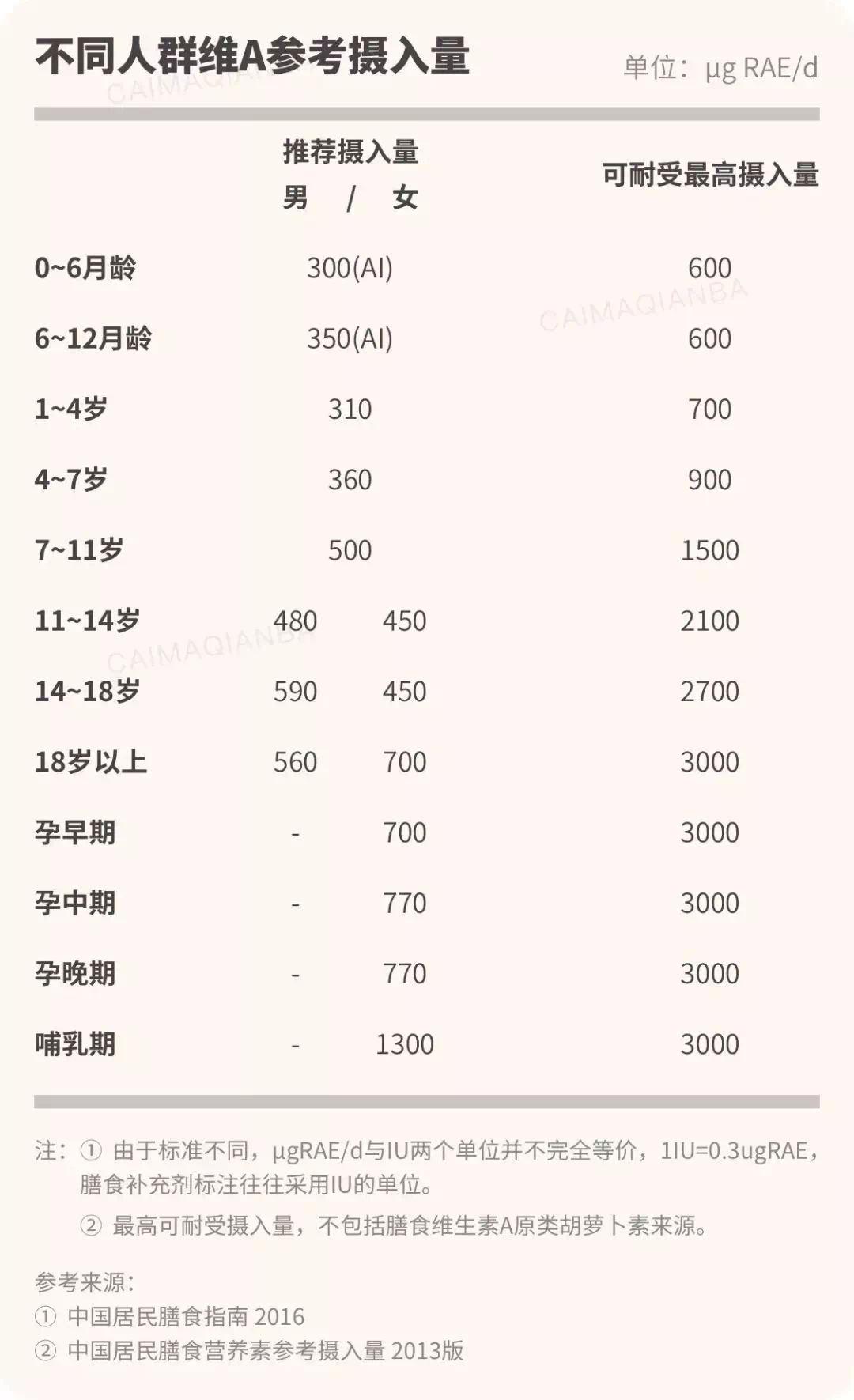
Due to the low toxicity of vitamin A from plant sources, such as original carotenoids, UL only targets retinol or vitamin A from retinol sources (including animal foods, supplements, etc.).
Looking back on pig liver, vitamin A in pig liver is the source of retinol. According to the data from two different sources in the table, the content is 4972/6502 gRE (the sampling place is different from the sample).
According to RNI and UL of different ages, combined with VA content of the above two different pig livers, I calculated a detailed copy of < < safe eating range of pig liver every week > >.
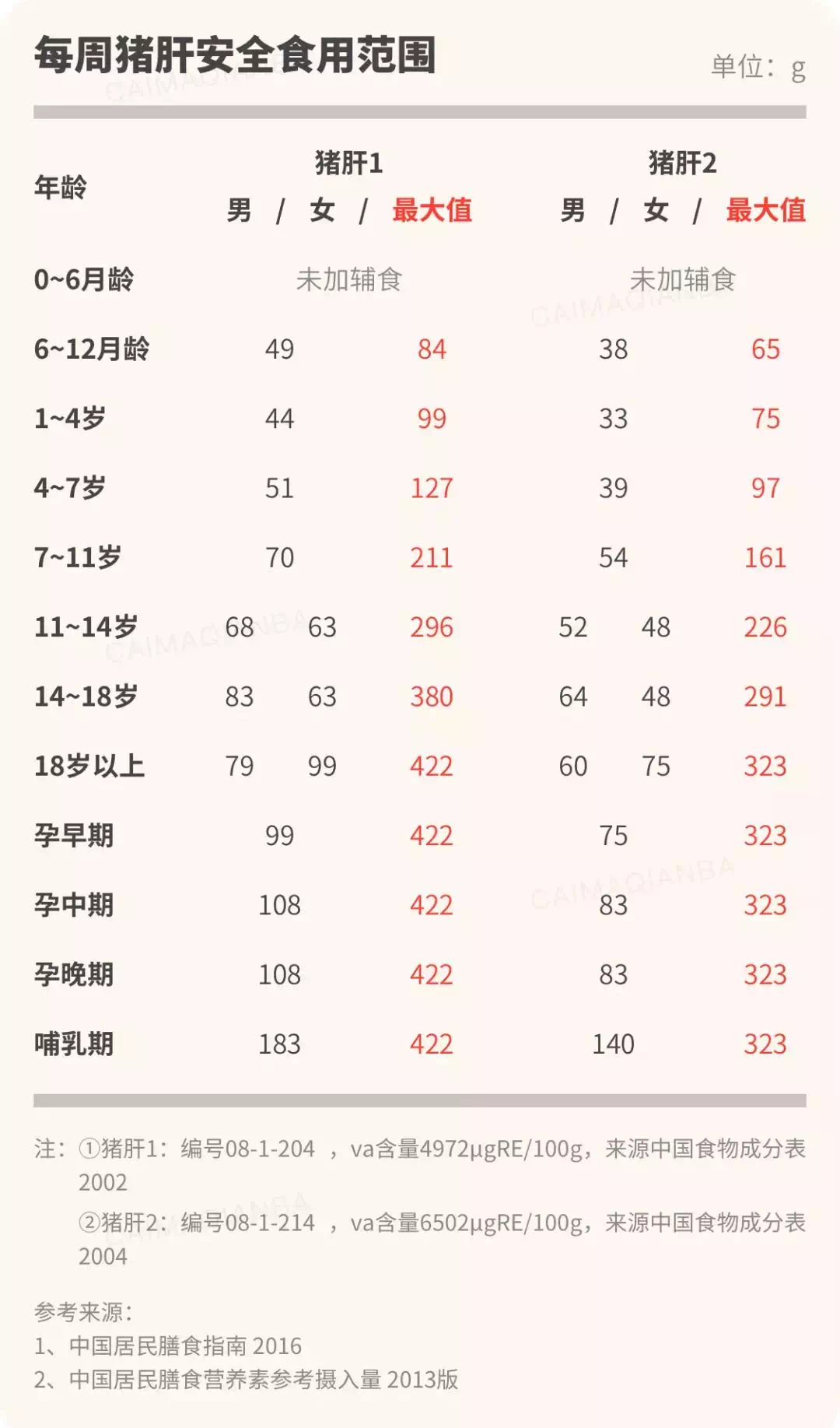
Let me briefly explain to you:
The black part is the recommended intake of vitamin A and the amount of pork liver that can be eaten every week.
The scarlet letter maximum value is calculated according to the UL of vitamin A, and the amount of pork liver should not exceed this amount every week, which may have toxic and side effects.
More than the black value, but there will be no additional benefits in the red range, but there will be no toxic or side effects. That is to say, at all ages, the value in black on the left is the amount of pork liver that we can safely eat every week.
Of course, egg yolk also contains retinol-derived vitamin A or other animal foods, but it is not much. Here, only the source of pig liver is calculated.
Well, it doesn’t matter if you don’t look at the above, which means:
For expectant mothers during pregnancy, it is safe to eat pork liver properly within 75 ~ 85 g per week.
If you have eaten pork liver every week, of course we do not advocate taking vitamin A supplements containing retinol during pregnancy, so as not to increase the risk of excess.
In addition, I would also like to emphasize the formulation of UL. Scientists have fully considered the teratogenic risks during pregnancy that you are most worried about.

There is really no need for you to frighten yourself on the data calculated by the state… (that is, you should not exceed the red value in the above table)
Is it okay not to eat pork liver?
It is also possible.
Pig liver or other animal liver provides nothing more than iron, vitamin A, folic acid, high-quality protein and other nutrients, of which iron and vitamin A are the most important.
That is to say, we eat more other foods rich in these nutrients, which can theoretically replace pork liver and are not necessary, but you also need to consider the actual food intake.
So, intake of red meat can completely supplement the iron needed by physiology?
Sorry, I can’t.
Let’s look at two tables. Table 1 shows the demand for iron for different ages and Table 2 shows the iron content per 100g of common foods.
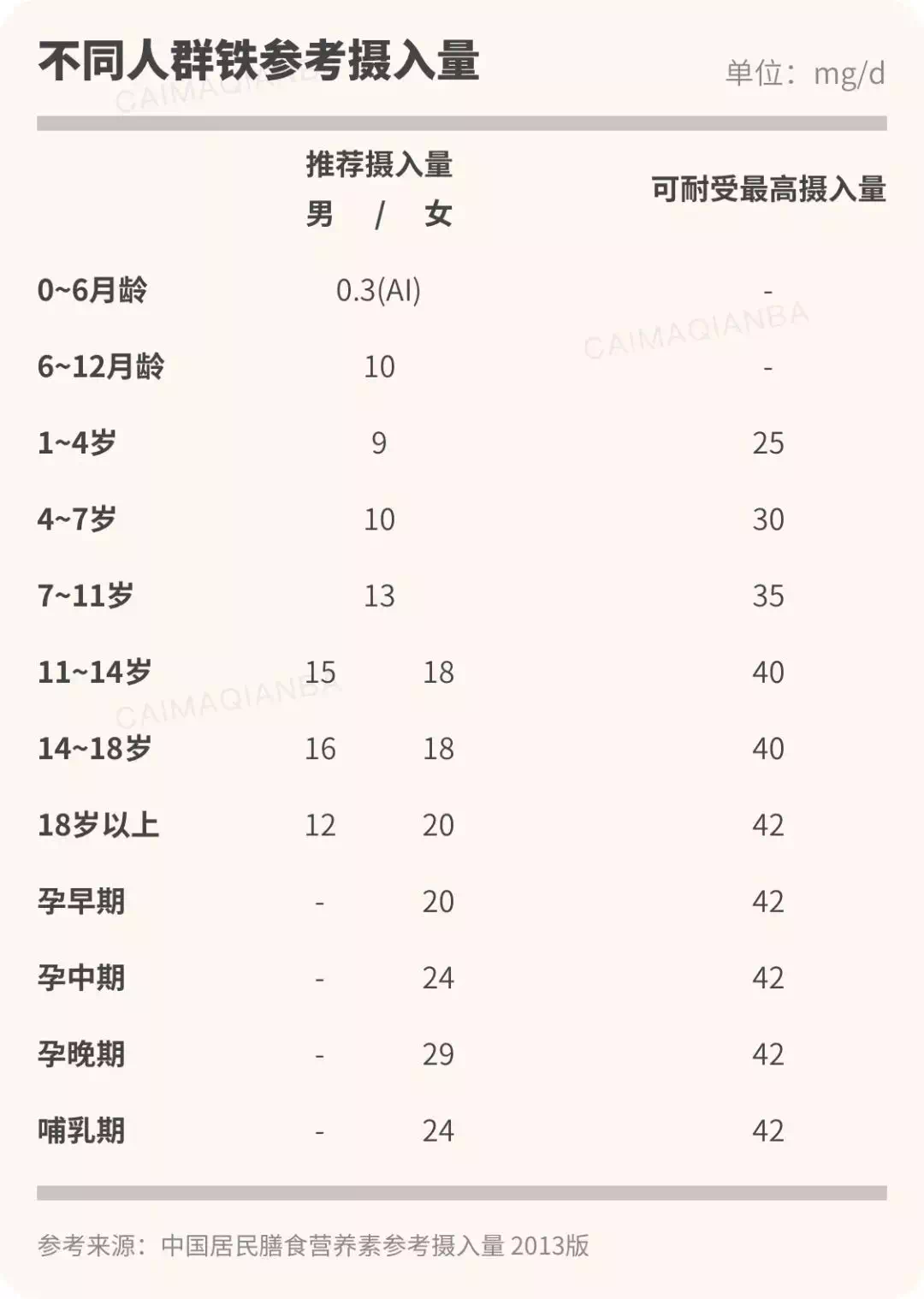
For pregnant women in the third trimester of pregnancy, the recommended intake of iron is 29 mg/d. According to the average iron content of 3.2 mg/100 g of three common red lean meat, it is necessary to eat more than 900 grams of red meat to meet the iron requirement for one day. Can the average person eat it?
In contrast, the efficiency of iron supplement in pig liver is much higher than that in red meat.
In addition, some foods in the diet contain relatively rich vitamin A. Theoretically, the vitamin A needs of pregnant and lactating women can be completely met through diet.
If you don’t eat animal liver, my advice is this:
Pregnant expectant mothers who do not eat animal liver or blood products:
Eat more green leafy vegetables and colored vegetables such as red and yellow. For pregnant women who cannot obtain sufficient vitamin A intake through diet, it is necessary to supplement vitamin A and iron through dietary supplements. You can choose to take dietary supplements containing-carotene.
Breastfeeding mothers who do not eat animal liver or blood products:
For lactating women who cannot obtain sufficient vitamin A intake through diet, it is necessary to use vitamin A dietary supplements, and dietary supplements containing-carotene can be taken.
Do you have anemia if you don’t eat pork liver or iron?
Not necessarily.

The human body is very wonderful and intelligent. It will adjust the absorption and excretion ratio of some nutrients by itself, increasing the absorption rate and reducing the excretion rate when lacking. When the intake is large, the absorption rate is reduced and the excretion rate is increased.
Moreover, the absorption of nutrients is also affected by other dietary factors and is not a single environment.
Therefore, it is not that you will definitely suffer from anemia if you do not eat pork liver or iron.
However, if the hemoglobin is found to be lower than 110 g/L in physical examination, it means that there is real anemia. In addition to supplementing iron to correct anemia as soon as possible, we should also pay attention to eating more foods rich in heme iron from the diet.
After all, preventing and correcting iron deficiency anemia is to combine dietary guidance, increase foods rich in heme iron and improve the absorption rate of non-heme iron. Can you eat iron alone for a lifetime?
Are pork liver forbidden by authoritative organizations?
No.
Indeed, some agencies such as Finland’s Food Safety Administration, the US Foundation for Good Birth and Good Care, and the British National Health Service recommend pregnant women to restrict or avoid eating animal livers.
But can these countries represent the world? Obviously not.
For example, in neighboring Japan, whose eating habits are closer to ours, Japan’s Ministry of Health, Labor and Welfare’s Pregnancy Life Index (Dietary Guidelines for Pregnant Women) introduces the common sources of iron in Japan’s diet (all look in Chinese, I believe you can probably understand them).
The first table is pig liver and the second is chicken liver. There is no mention that animal liver cannot be eaten during pregnancy, but attention should be paid to the problem of excessive accumulation.
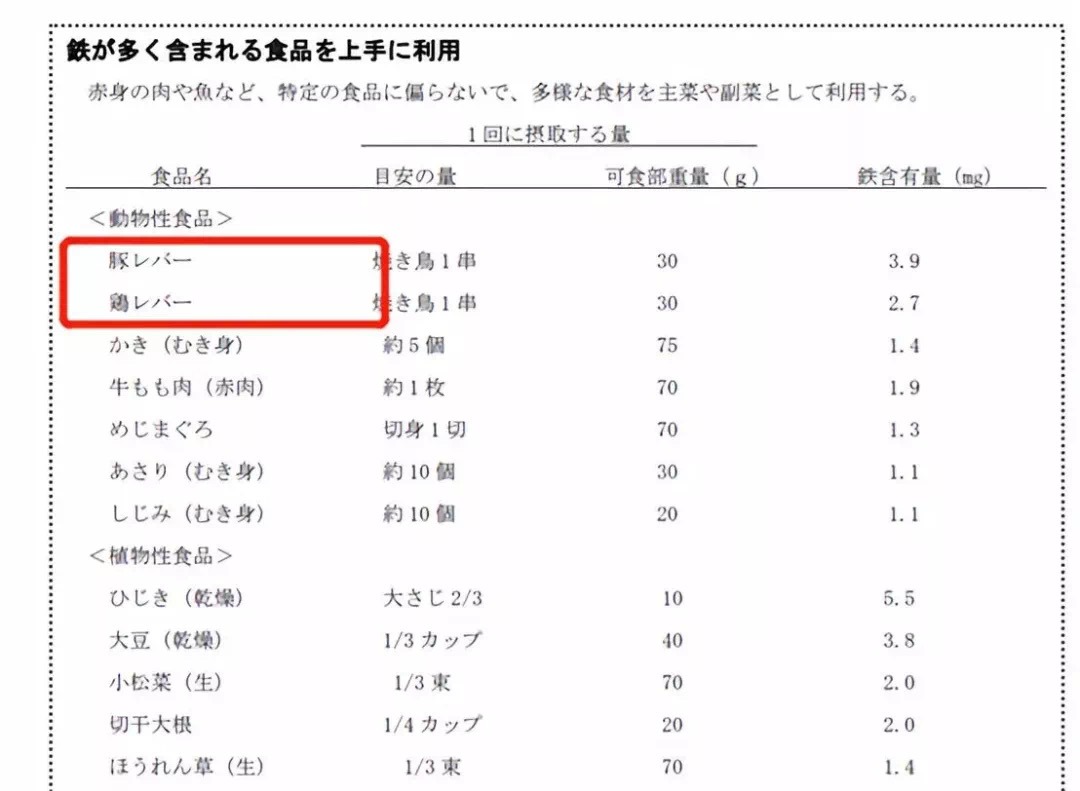
Most importantly, let’s look at the Dietary Guidelines for Chinese Residents and the Pagoda of Balanced Diet for Women and Children formulated by the Chinese Nutrition Society.
In preparation for pregnancy, pregnancy and lactation, it is explicitly mentioned that animal blood or livestock and poultry liver should be eaten 1-2 times a week, and the total amount should reach 85 g pig liver or 40 g chicken liver during lactation.
In the dietary guidelines, the recipe for the second trimester of pregnancy also takes [green pepper fried pork liver rice] as an example.


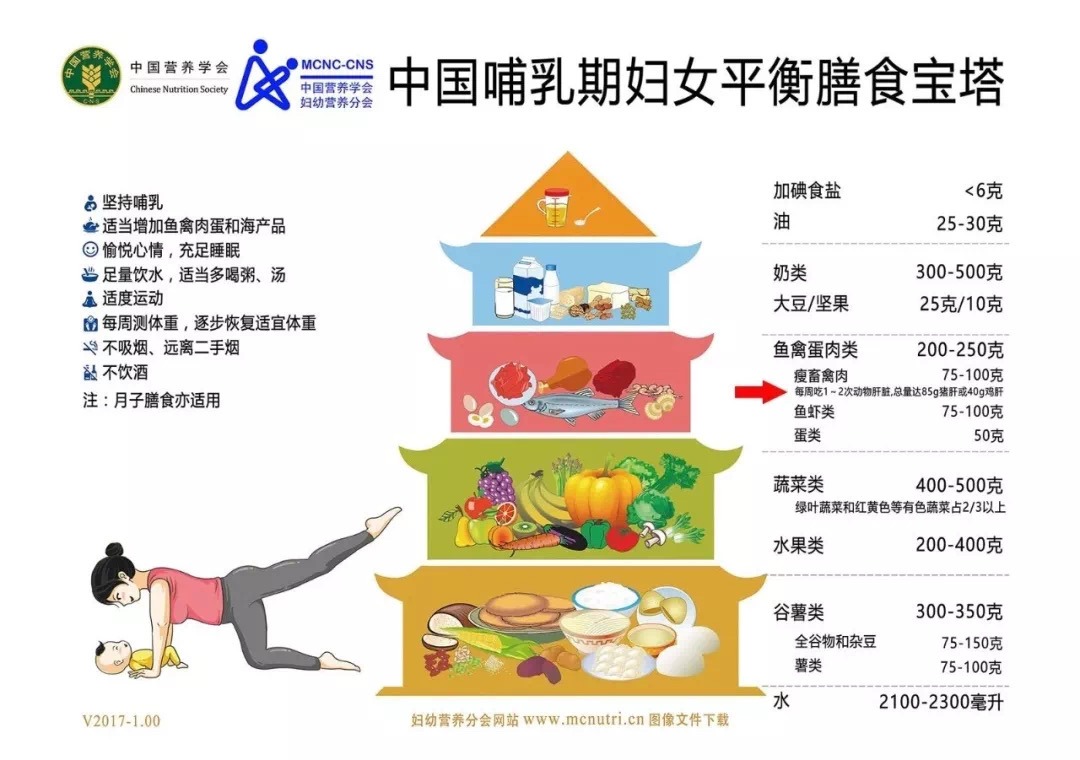
We live in a vast territory of China. When providing Chinese babies and mothers with popular nutrition knowledge, although we can refer to the suggestions of foreign authoritative institutions as evidence-based basis, but:
When it comes to information on nutrient reference intake and food nutritional composition, please give priority to the data formulated and published by Chinese authoritative institutions as the main evidence-based basis.
Because when each country formulates its own dietary nutrient reference intake, it takes into account the dietary intake and absorption of its residents and the nutrient endowment of its food materials.
Not to mention the nutritional ingredients of the food, the pork liver you bought in China refers to the nutrient content of the pork liver of the United States Department of Agriculture. Do you think this pork liver can be one?
We should follow evidence-based medicine to popularize science, raise children and even see doctors.
But don’t forget, we should also consider China’s national conditions.
